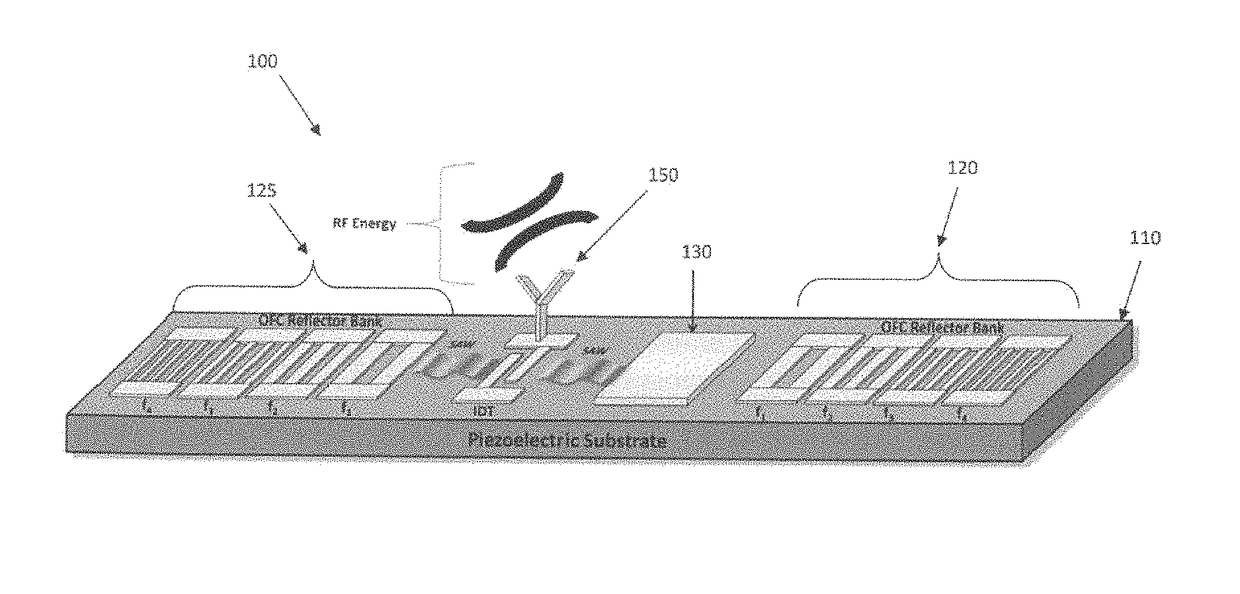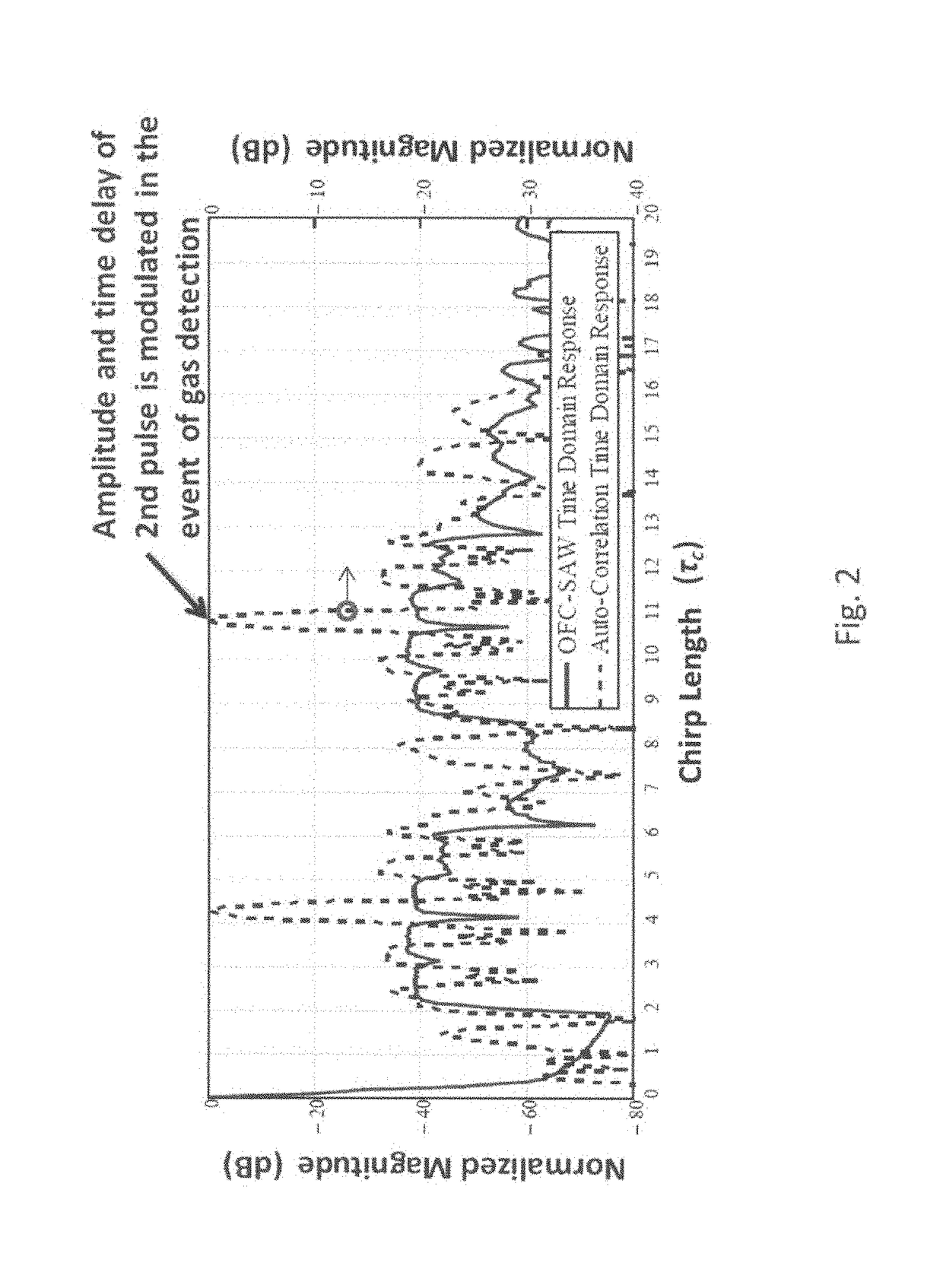Method of forming surface acoustic wave tag-based gas sensors
a technology of surface acoustic wave and gas sensor, which is applied in the direction of measurement devices, instruments, scientific instruments, etc., can solve the problems of colorless, odorless, and inability to detect by human senses, and achieve the safety risks of the gas itself, colorless and odorless gas,
- Summary
- Abstract
- Description
- Claims
- Application Information
AI Technical Summary
Benefits of technology
Problems solved by technology
Method used
Image
Examples
first embodiment
[0059]The first embodiment describes the creation of a passive (battery less), wireless, SAW device with an integrated hydrogen gas sensor that utilizes a room-temperature hydrogen sensitive Pd on SnO2 film. In the preferred embodiment, the hydrogen gas sensors are built on a platform technology referred to as OFC-SAW radio frequency identification (RFID) tag sensors.
[0060]Orthogonal frequency coding the SAW identification tags and sensors enables unique sensor identification for use in a multi-sensor environment. Orthogonal frequencies are used to spread the signal bandwidth. The orthogonality condition describes a relationship between the local chip frequencies and their bandwidths wherein the adjacent frequencies are not required to be sequential. The OFC-SAW tag can be on the commonly used YZ-lithium niobate (YZ-LiNbO3) piezoelectric substrate 110, a well-researched SAW device platform, and implements spread spectrum coding in order to achieve multiple-access capability to read ...
second embodiment
[0063]A second embodiment describes the development of a room-temperature hydrogen sensitive tin dioxide (SnO2) and palladium (Pd) film. FIG. 3a shows a schematic of the in-situ fixture 200 with a masked SAW device 220 inside the electron-beam film deposition system 200, with dual quartz crystal monitors 260, and high-vacuum RF feed through 290. The metal source is 280.
[0064]FIG. 3b is an exploded view of the SAW device 220 on the sample holder 210 connected with an RF cable, shadow mask 230 and the evaporation film molecules 250. As shown, an electron beam 270 is applied to the metal source 280 causing metal vapors directed toward the masked saw device 220.
[0065]The growth and processing of the Pd—SnO2 is important to its reversibility, sensitivity and room-temperature operation when exposed to hydrogen gas. Pd—SnO2 with non-uniform thickness profiles were created by vapor deposition through a shadow mask 230 as shown in FIG. 3a and annealed for approximately 5 min at approximately...
PUM
| Property | Measurement | Unit |
|---|---|---|
| upper flammability limit | aaaaa | aaaaa |
| upper flammability limit | aaaaa | aaaaa |
| upper flammability limit | aaaaa | aaaaa |
Abstract
Description
Claims
Application Information
 Login to View More
Login to View More - R&D
- Intellectual Property
- Life Sciences
- Materials
- Tech Scout
- Unparalleled Data Quality
- Higher Quality Content
- 60% Fewer Hallucinations
Browse by: Latest US Patents, China's latest patents, Technical Efficacy Thesaurus, Application Domain, Technology Topic, Popular Technical Reports.
© 2025 PatSnap. All rights reserved.Legal|Privacy policy|Modern Slavery Act Transparency Statement|Sitemap|About US| Contact US: help@patsnap.com



